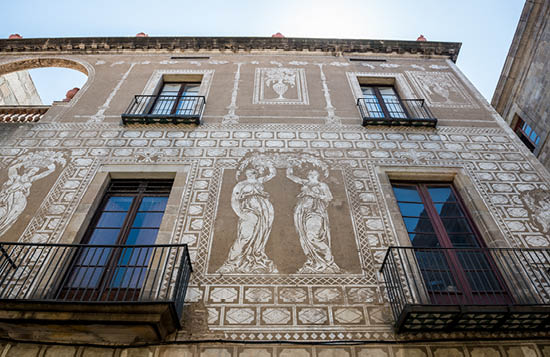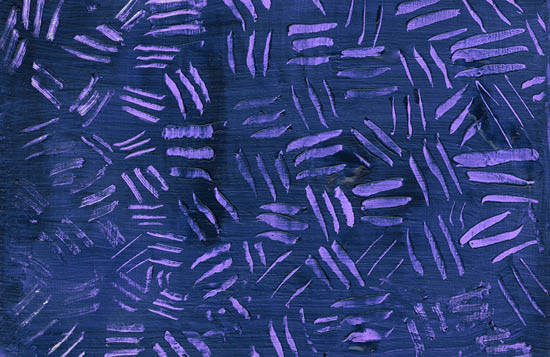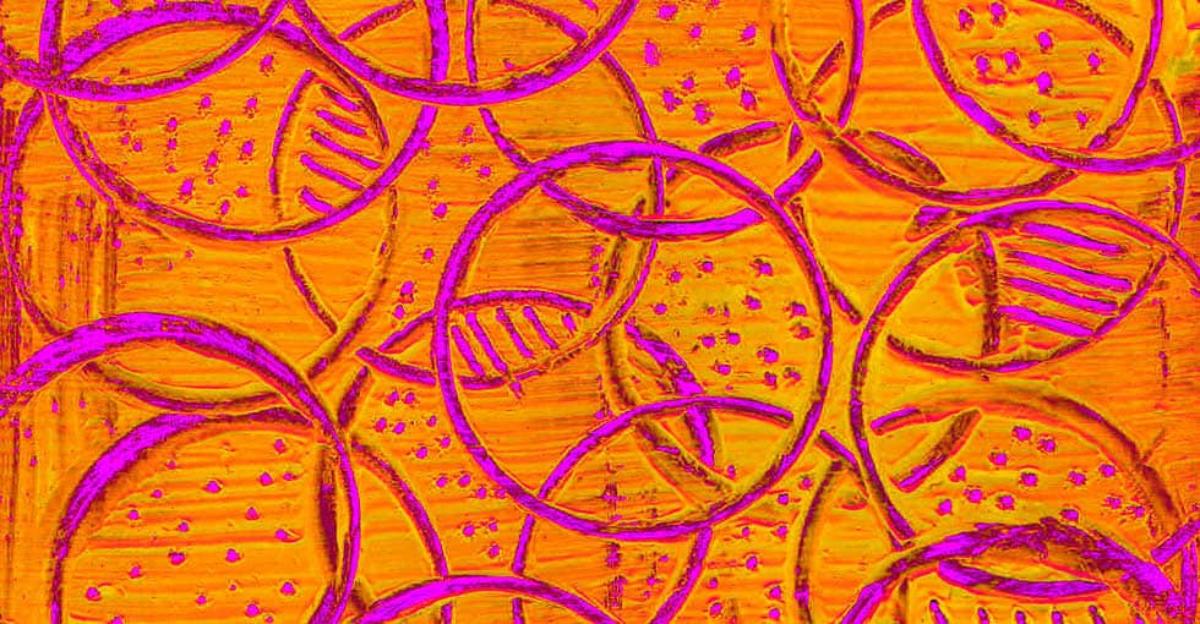Derived from the Italian word for “scratch”, Sgraffito is the process of scratching or scraping one layer to reveal another layer, usually of contrasting color, beneath. It’s an effective way to add interest, texture, and color that artists have employed for hundreds of years. Popularized in the 15th century, the process was common during the Renaissance and was used to paint facades on palaces throughout Rome.
Sgraffito Technique: Traditional Method
Artists are still using the Sgraffito technique to decorate walls today. They begin by applying a single layer of tinted plaster to a damp wall. When it’s dry, they add another, and perhaps another, finally scraping a design out of the top layer to reveal the contrasting colors beneath.

Sgraffito exterior, Gothic Quarter, Barcelona, Spain
Sgraffito Technique for the Art Classroom
Scraffito Ceramics:
Sgraffito is also commonly used with ceramics. Using a technique identical to the plaster wall above, artists scrape layers of glaze or color away to reveal the color underneath. This can be an exciting project for your art students. Starting with “leather hard” pottery, either a shaped piece or a simple strip of clay, layer and trace a pre-made design into the clay using a pencil. Then brush on several coats of underglaze. When the glaze is dry, use a wire stylus tool or mini ribbon sculpturing tool to scrape the color surrounding the design, leaving the glazed design popping against the natural clay background.
Scraffito Paint & Pastels:
The Sgraffito technique can also be used quite successfully to add detail and depth to paintings and drawings. When working with oils, watercolors, or acrylics, simply layer a base coat or spot-paint parts of your canvas that will show through an upper layer. Then, while the paint is still wet, scrape it away from specific areas to reveal the color underneath. Almost any pointed, object will work for scraping – toothpicks, cuticle pushers, nail-cleaning knives, knitting needles, etc. Colored pencils, crayons, and oil pastels can also be scraped away to uncover a layer below.

Consider using Sgraffito to add bright elements and highlights or darker shading and shadows to your students’ work. Black and white is a simple way to get students started with the process. Using paints, pencils, or crayons, layer a solid white base, then cover with black and use a scraping tool to carve a design out of the upper layer, revealed in the white layer below. Or, use a simple scratch art board.

When you’re ready to move on to color, try the same process, using two contrasting color layers. Testing your color combinations on a scrap paper is always a good idea, so you can see how they layer and how much or little paint is required to completely cover what’s underneath.
More Art Lesson Plans & Inspiration
Looking for more ideas and inspiration for your art room and students this year? Check out the other Art 101 blogs and the Art Lesson Plan collection to see what’s new. Also be sure to stop by the online store to shop thousands of high quality and affordable art products and tools to make this the best year yet.






Leave a Reply